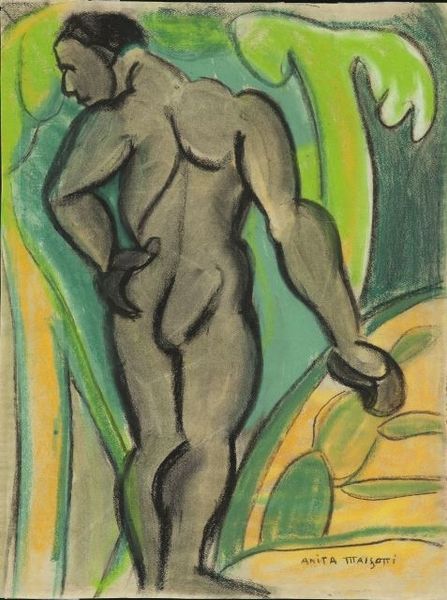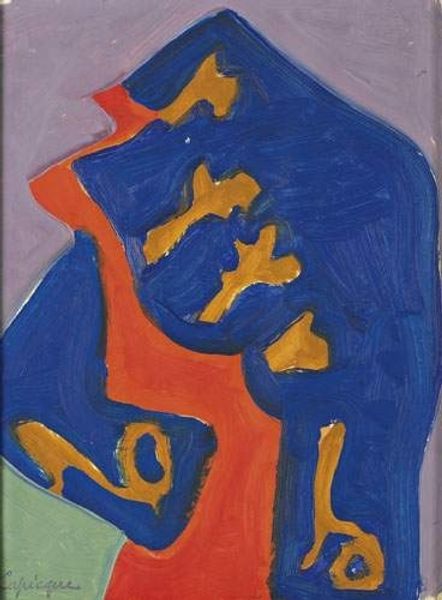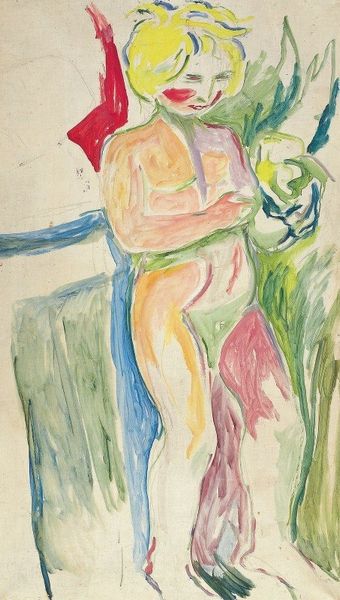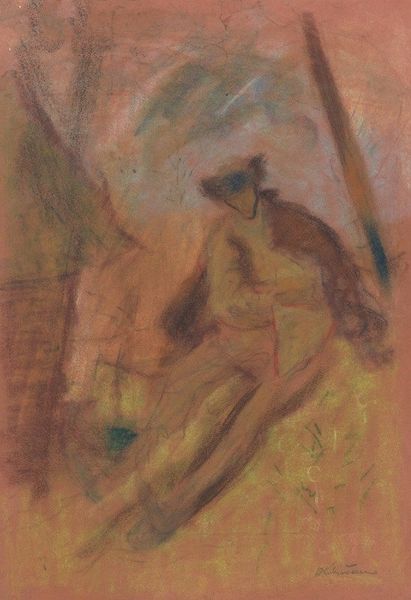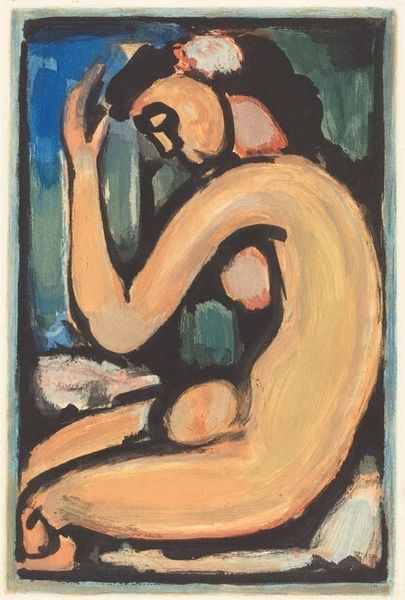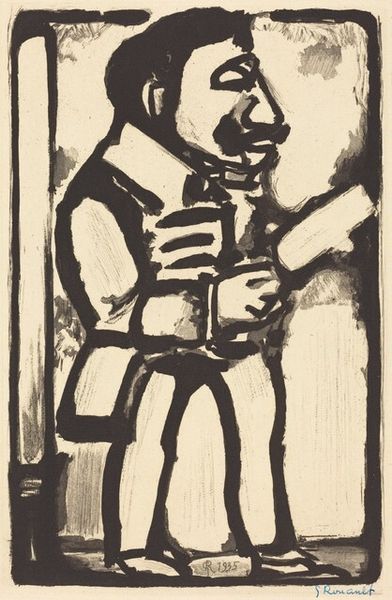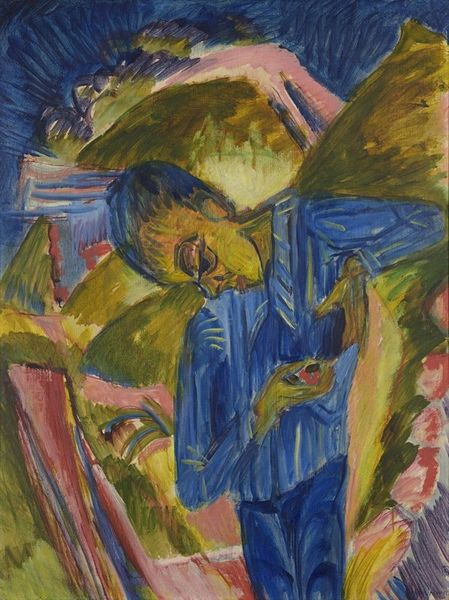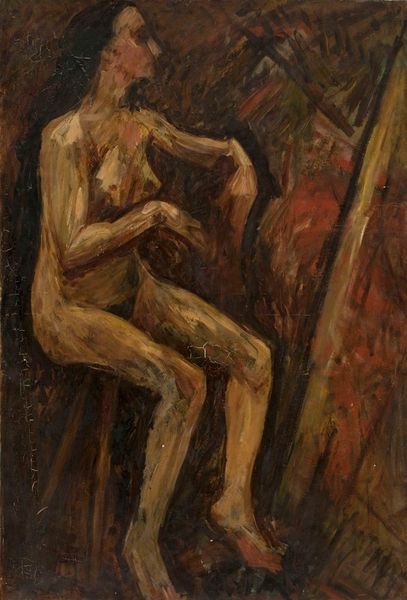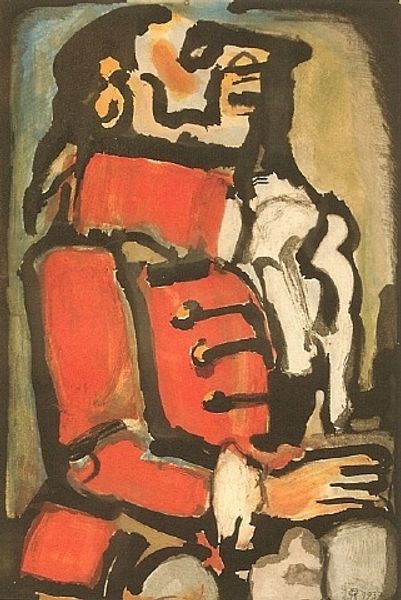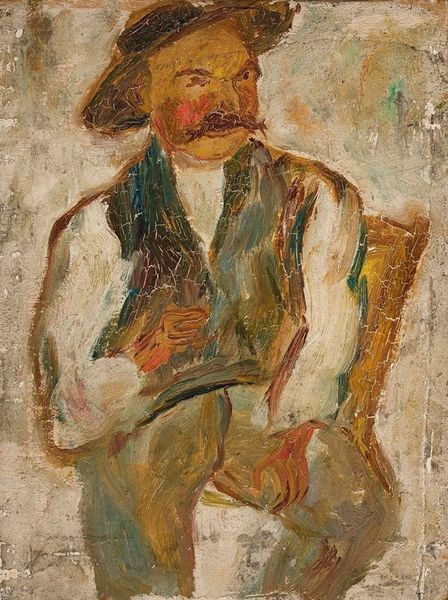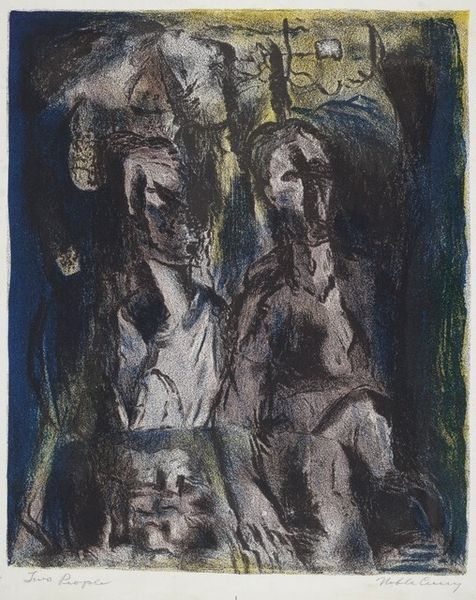
painting, oil-paint
#
portrait
#
cubism
#
painting
#
oil-paint
#
figuration
#
oil painting
#
genre-painting
Copyright: Public domain
Editor: We're looking at "Man with a Suitcase" by Josef Capek, painted in 1926, oil on canvas. It’s got this very blocky, almost hurried feel, wouldn’t you say? The muted colors and geometric shapes make it somewhat unsettling. What's your take? Curator: Well, consider the materiality. The roughness of the oil paint application, almost like plastering a wall. It points to the physical act, the labor of creation. Think about the Czech avant-garde scene at the time, challenging the traditional art market and the preciousness of the art object itself. Capek's work reflects an interest in accessible forms and relatable subject matter drawn from everyday life. It pushes against the boundary between fine art and the everyday, focusing on the ‘means’ of making the work, too. Do you see how this cubist portrayal challenges classical representations? Editor: Yes, it's interesting how he flattens the figure and the suitcase into these geometric shapes. How do you think the contemporary audience received this focus on materials and accessibility rather than pure aesthetics? Curator: The work would’ve resonated within circles interested in Socialist ideals: It would have seemed accessible by deconstructing hierarchical structures within fine arts. Yet the piece also maintains the elevated status by remaining an ‘oil painting,’ instead of appropriating directly from industry like Duchamp. Note how the texture is built through obvious labor and careful application, showing a commitment to the history of ‘painting’ but with his contemporary concerns. Editor: That makes perfect sense! So, it’s like Capek is engaging in a material conversation about labor, value, and the role of art in society, rather than just depicting a man with a suitcase? Curator: Precisely. It forces us to consider the act of creating art and who art is for, using everyday life as inspiration, rather than just the end result hanging on a wall. Editor: I never thought about it that way. It definitely makes me appreciate the piece a lot more. Curator: The materials and the method themselves carry meaning, don't they?
Comments
No comments
Be the first to comment and join the conversation on the ultimate creative platform.
